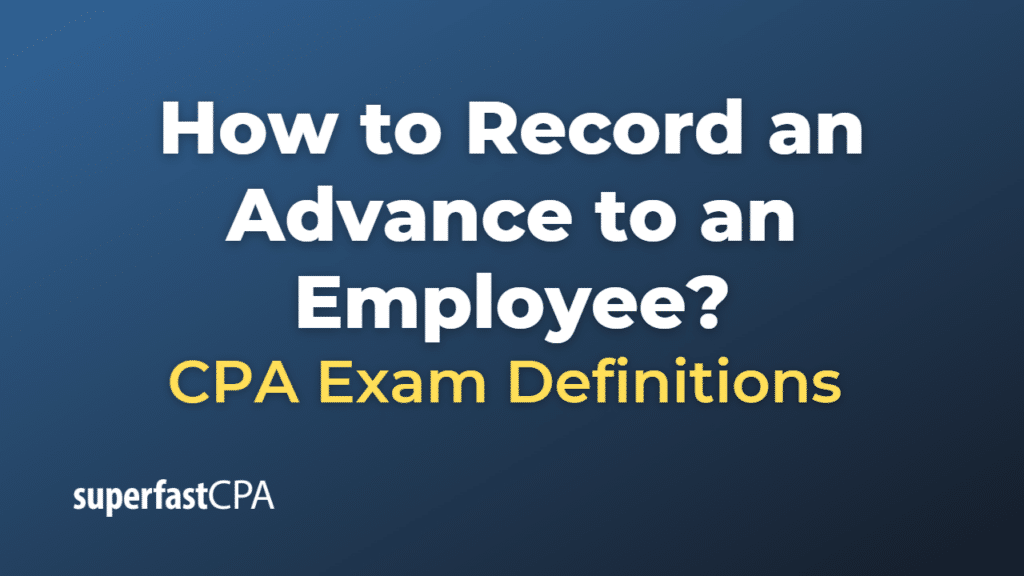How to Record an Advance to an Employee
When a company gives an advance to an employee, the payment should be recorded in the company’s financial records. The payment would be considered a loan or a receivable, as it’s an amount that the company expects to get back from the employee.
Here’s how to record an advance to an employee:
- Record the Advance: When the advance is made, you would decrease (credit) your Bank Account and increase (debit) an Employee Advance account (a type of receivable account). This records the fact that the company has paid out money and is owed money by the employee.
For example, if the company provided an advance of $1000 to an employee, the entry would be:
| Date | Account Title | Debit | Credit |
|---|---|---|---|
| Jul 1 | Employee Advance | $1000 | |
| Bank Account | $1000 |
- Record the Repayment: When the employee repays the advance, either through payroll deductions or a direct payment, you would decrease (credit) the Employee Advance account and increase (debit) your Bank Account.
When the employee repays the advance, the entry would be:
| Date | Account Title | Debit | Credit |
|---|---|---|---|
| Jul 31 | Bank Account | $1000 | |
| Employee Advance | $1000 |
In this way, you can keep track of how much money is given as advances to employees and how much has been repaid.
Please note: The specifics of how to handle and record employee advances can depend on the company’s policies and local regulations, as well as the terms of the employment contract. Always consult with an accounting professional or HR representative if you are unsure about the correct procedures.
Example of How to Record an Advance to an Employee
Let’s say your company provides an advance of $500 to an employee on June 1, 2023. This is how you would record the advance:
- Record the Advance: When your company gives the advance to the employee, you’ll decrease (credit) your Cash (or Bank Account) and increase (debit) an Employee Advance (or Loans to Employees) account.
The journal entry on June 1, 2023, would be:
| Date | Account Title | Debit | Credit |
|---|---|---|---|
| June 1, 2023 | Employee Advance | $500 | |
| Bank Account | $500 |
Now, let’s assume the employee pays back the advance by $100 per month via payroll deductions starting from July 1, 2023. Here’s how you would record the repayment:
- Record the Repayment: Each month when the payroll is processed, you’ll decrease (credit) the Employee Advance account and increase (debit) your Cash (or Bank Account) by $100.The journal entry on July 1, 2023, would be:
| Date | Account Title | Debit | Credit |
|---|---|---|---|
| July 1, 2023 | Bank Account | $100 | |
| Employee Advance | $100 |
You would make similar entries each month until the full $500 has been repaid.
This way, your financial records accurately reflect both the initial advance and the subsequent repayments.













